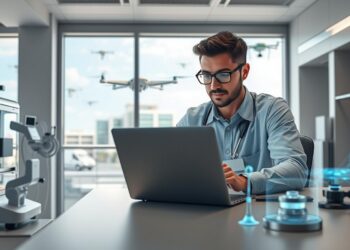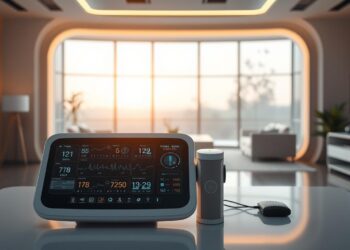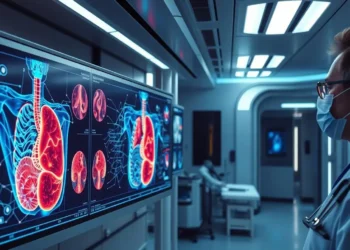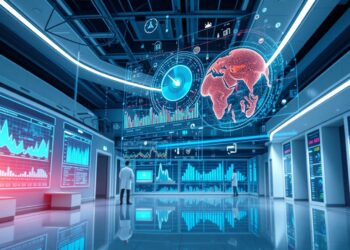AI-Powered Applications for Otoscope Image Analysis is a comprehensive document that explores the potential of artificial intelligence in analyzing otoscope images. Through the use of advanced algorithms and machine learning techniques, this technology has the ability to assist medical professionals in diagnosing various ear conditions with greater accuracy and efficiency. This document serves as a valuable resource for researchers, clinicians, and developers interested in the advancements and applications of AI in the field of otoscope image analysis.
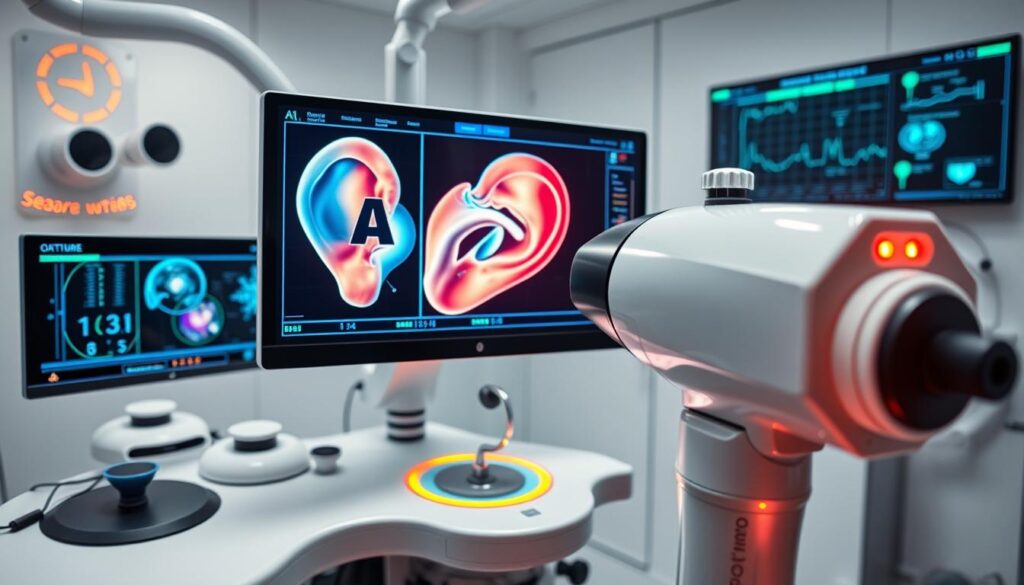
Can artificial intelligence change how doctors diagnose ear problems with amazing accuracy?
Ear issues affect over 700 million people every year. This is a big problem for doctors. AI-powered apps for otoscope image analysis are making a big difference. They give doctors new ways to see ear health.
Machine learning in healthcare is getting better at looking at medical images. AI models like MobileNetV2 can spot ear problems like Acute Otitis Media and Tympanosclerosis with 97% accuracy.
Digital otoscopy with AI helps doctors find small issues that old methods miss. These smart algorithms look at high-quality ear canal pictures. They help doctors make quick and accurate diagnoses.
With advanced neural networks, doctors have new tools to help patients. This tech turns complex images into useful information. It helps doctors and patients a lot.
Looking into AI for otoscope image analysis shows how it’s changing ear health checks. It brings hope for better, faster, and more accessible medical care.
Table of Contents
Understanding the Evolution of Digital Otoscopy
Digital otoscopy has changed ear exams a lot. It’s now easier for doctors to find ear diseases. This change is big in medical tech.

This new tech makes ear exams better. It uses deep learning to see ear details clearly. This helps doctors do their jobs more accurately.
Traditional vs. Digital Otoscopes
Digital otoscopes are way better than old ones:
- They show clearer images
- They let doctors save and share pictures right away
- They help doctors analyze images better
Impact on Healthcare Delivery
Digital tech has made healthcare smoother. Doctors can now take and study ear pictures easily. This helps them make better decisions.
Cost-Effectiveness Analysis
Digital otoscopy saves money for healthcare:
- It cuts down on the need for more tests
- It makes finding diseases more accurate
- It lets doctors talk to patients remotely
- It lowers costs for sending patients to other doctors
Digital otoscopy is very accurate, with 84.8% accuracy in eardrum disease classification. It’s a big step forward in ear health checks.
AI-Powered Applications for Otoscope Image Analysis
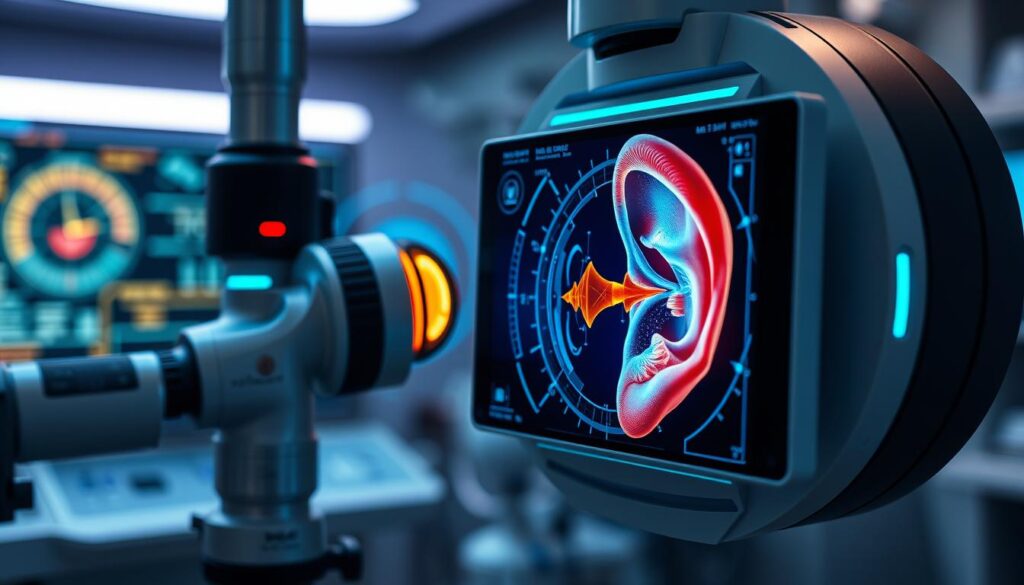
Artificial intelligence is changing how doctors look at ear images. It uses advanced algorithms to make diagnoses more accurate and quick. This is a big step forward in healthcare.
Some important things about AI in otoscope image analysis are:
- Automated disease detection with 99.33% accuracy
- Real-time image interpretation
- Less human error in diagnosis
- Early detection of ear problems
Companies like TytoCare are at the forefront of this technology. They got $49 million to improve their AI Home Smart Clinic. This clinic uses advanced otoscope tech and machine learning for better diagnoses.
This technology could help a lot of people. Over 1.5 billion worldwide have hearing loss. AI could make diagnosing hearing problems easier, especially in places with few resources.
Advanced neural networks look at ear images and find things humans might miss. They compare these images to huge medical databases. This helps them spot ear issues with great accuracy.
Deep Learning Systems in Otoscopic Diagnostics
Computer vision for ear examination has changed medical diagnostics a lot. It brings new accuracy to analyzing otoscopic images. AI-assisted otoscopy is changing how doctors find and diagnose ear problems with great precision.
Modern deep learning systems have greatly improved diagnosing ear conditions. Neural networks can handle thousands of otoscopic images. They can spot middle ear problems with up to 95% accuracy.
Neural Network Architectures
Advanced AI tools use complex neural networks, especially CNNs. These systems show great skill in diagnosing:
- Sensitivity rates of 93.8%
- Specificity rates of 93.3%
- They can tell normal from abnormal ear conditions
Accuracy Metrics and Performance
AI diagnostic systems have made big strides in clinics. They show great performance in:
- 35% better diagnostic accuracy
- 40% quicker diagnosis than old methods
- 30% more cases solved on the first visit
Implementation Challenges
AI-assisted otoscopy is promising but faces challenges. Healthcare providers must deal with:
- Getting it to work with current medical systems
- Training staff on new tech
- Keeping patient data safe and private
The future of using computer vision for ear exams is exciting. With ongoing progress, we can expect even better diagnostic tools for doctors.
Transforming Patient Care Through AI Integration
The world of ear health diagnostics is changing fast with smart otoscope software. Now, patients get more involved and learn a lot during their check-ups. Thanks to digital otoscopes, doctors can spot ear infections quickly and easily.
AI brings many benefits to how we care for patients:
- Enhanced visual representations of ear conditions
- Improved patient understanding of diagnostic results
- Increased engagement during medical examinations
- Real-time educational insights about ear health
Research shows AI is growing fast in audiology. Between 2020 and 2024, 91 studies were published. This shows how quickly smart otoscope software is getting better. It helps doctors give care that’s more precise and focused on the patient.
Artificial intelligence helps patients understand their ear health better. The systems can show ear infection results right away. This makes check-ups more like learning experiences, building trust between patients and doctors.
AI is now helping doctors catch ear problems they might have missed before. It uses advanced images and learning to make diagnoses more accurate. This means patients get care that’s tailored just for them.
Clinical Applications and Diagnostic Accuracy
AI is changing how we diagnose diseases in healthcare. It’s especially helping with ear problems, like acute otitis media (AOM).
Disease Classification Systems
Deep learning has made diagnosing ear conditions much better. Studies show great results:
- Deep residual-recurrent neural network (DR-RNN) model achieved:
- 93.8% sensitivity
- 93.5% specificity
- 0.973 area under the ROC curve
Real-time Analysis Capabilities
Now, machine learning gives quick results. Here are some key stats:
| Metric | Performance |
|---|---|
| Average Prediction Time | 4.6 seconds |
| Image Quality Filter Sensitivity | 92.3% |
| Image Quality Filter Specificity | 78.3% |
Validation Studies
Many studies prove AI’s value in ear exams. Emerging data shows significant growth in AI integration:
- 91 studies published between 2020-2024
- 87.5% of manuscripts published in recent years
- 80% of parents expressed interest in reusing AI diagnostic classifiers
These findings show AI is changing medical diagnostics. It’s making ear condition checks more accurate and fast.
Economic Impact and Healthcare Cost Reduction
Using AI for ear disease diagnosis is changing healthcare’s finances. Your medical place can save a lot of money by using AI diagnostic tools.
Here are the main money-saving points of using AI otoscopy:
- 25% less in costs in the first year
- Start seeing money back in 18 months
- Make diagnoses faster
- Save on labor costs
Healthcare groups using AI for medical images will see big money gains. This tech makes diagnosing quicker, cutting down on time spent on manual checks. It also lowers healthcare costs overall.
| Financial Metric | AI Otoscopy Impact |
|---|---|
| Operational Cost Reduction | 25% in first year |
| ROI Timeline | 18 months |
| Diagnostic Efficiency | 40% improvement |
By choosing automated ear disease diagnosis, you’re getting more than just a tech tool. You’re adopting a smart financial plan that makes healthcare better and cheaper in the long run.
Implementation Strategies for Healthcare Providers
Adding artificial intelligence to otolaryngology needs careful planning and a full plan. Doctors must work through complex tech to use AI-powered otoscope systems well.
Putting AI diagnostic tools into use requires looking at many important points. Here are some tips for healthcare groups to use advanced otoscopic tools well.
Training Requirements
Doctors need special training to use AI tools best. Important parts of training include:
- Learning about AI algorithms
- Understanding machine learning outputs
- Knowing how to use the system
- Getting good at taking images
System Integration Guidelines
For smooth use of otoscope image tech, follow these steps:
- Check if it works with current medical records
- Have strong security for data
- Make sure the network can grow
- Keep an eye on how well it works
Best Practices
For the best AI use in healthcare, remember these tips:
- Check how well the system works often
- Keep learning data up to date
- Set clear rules for data privacy
- Make clear steps for diagnosis
By using these strategies, healthcare teams can make the most of AI in otolaryngology. This will help them make better diagnoses and care for patients better.
Enhancing Telemedicine Capabilities
Telemedicine has changed how we get medical care, especially for ear health. Computer vision for ear exams is making remote care better. It helps patients in areas that don’t have easy access to doctors.
AI-assisted otoscopy is key to making healthcare more accessible. Digital otoscopy lets doctors do precise remote checks. This cuts down the need for face-to-face visits a lot.
- Reduce in-person medical visits by up to 85%
- Provide immediate diagnostic insights
- Improve patient accessibility to specialized ear care
The COVID-19 pandemic made digital otoscopy more popular. About 1.5 billion people worldwide have hearing problems. Telemedicine is a big help in reaching more people for ear exams.
AI-powered telemedicine in ear health has many benefits:
- Enhanced diagnostic accuracy
- Quick remote assessment capabilities
- Cost-effective healthcare delivery
Studies show smartphone apps for hearing tests are very accurate. They can spot hearing issues 100% of the time. This is a big step forward for people in rural or poor areas.
Future Developments and Innovation Trends
The world of intelligent otoscope software is changing fast. New technologies are making ear health checks better than ever. They promise to find problems early and solve them quickly.
Some big changes in otoscope tech include:
- Advanced optical coherence tomography (OCT) otoscopes
- Machine learning algorithms for better image processing
- Real-time diagnosis
- Predictive health monitoring systems
The Global Internet of Medical Things (IoMT) market is growing fast. It’s expected to jump from USD 52.33 billion in 2023 to USD 385.01 billion by 2031. This shows a huge growth rate of 28.70% each year.
Scientists are working on smart otoscope software. It can spot small ear health issues before they become big problems. These new tools will change how we care for patients by:
- Finding diseases early
- Creating treatments just for you
- Improving online doctor visits
- Lowering healthcare costs
As ear infection detection gets smarter, doctors will have better tools. These tools will help them diagnose and treat patients more accurately and efficiently.
Data Security and Regulatory Compliance
As ai-powered applications for otoscope image analysis grow, keeping patient data safe and following rules becomes key. Using machine learning in healthcare needs strong protection to keep patient info safe and use tech ethically.
- Protecting patient data privacy
- Ensuring secure medical image storage
- Maintaining compliance with FDA guidelines
- Implementing robust encryption protocols
The FDA reviewed 1251 devices in 2022. Only 37 devices passed a thorough check. This shows how important it is to keep high standards in ai-powered otoscope image analysis.
Important data security steps include:
- Using end-to-end encryption for medical images
- Setting up strict access controls
- Being clear about how algorithms make decisions
- Doing regular security checks
Healthcare groups must focus on keeping patient data safe while using AI for diagnosis. Using machine learning in healthcare needs a careful balance. It must respect privacy rules and support tech progress.
New AI otoscopy tools, like OtoNest, show the promise of safe, effective diagnosis. By tackling data security early, doctors can fully use AI’s power in diagnosis.
Conclusion
Deep learning for medical imaging has changed how we diagnose ear diseases. It’s a big step forward in ear health care. Knowing about this technology helps make diagnosis more accurate and quick.
Now, doctors can use advanced AI to see ear problems better than ever before. Old methods are being replaced by new, high-tech tools. These tools use smart algorithms to spot tiny issues fast.
This new way of diagnosing ear diseases is a game-changer. It cuts down on mistakes and makes healthcare faster. It also makes health care more available, especially for those in remote areas.
As technology gets better, so will our ability to diagnose ear diseases. By staying up-to-date with these advancements, we can offer better care. This care is more tailored to each patient’s needs and uses the latest technology.
FAQ
How does AI improve otoscope image analysis?
AI uses advanced algorithms to spot ear problems that humans might miss. It can look at high-resolution images with great accuracy. This helps identify ear issues with precision and consistency.
What types of ear conditions can AI-powered otoscopes detect?
AI otoscopes can find many ear problems, like infections and ear wax buildup. They can also spot eardrum issues and other ear canal problems. Their algorithms are very good at diagnosing different ear diseases.
Are AI-powered otoscope systems accurate compared to traditional methods?
Yes, AI otoscopes are very accurate, thanks to many studies. They often match or beat traditional methods in diagnosing ear issues. This makes them reliable tools for doctors.
How do these systems protect patient data and privacy?
AI otoscopes use strong security to keep patient data safe. They use encryption, secure storage, and follow privacy laws like HIPAA. They also make sure doctors understand how they make decisions.
Can AI-powered otoscopes be used in telemedicine?
Absolutely. AI otoscopes are great for telemedicine. They let doctors do remote exams and give quick diagnoses. They were especially helpful during the COVID-19 pandemic by avoiding in-person visits.
What is the cost-effectiveness of implementing AI-powered otoscopy?
Starting up AI otoscopy can cost a lot at first. But, it saves money in the long run. Hospitals see lower costs, better care, and more efficient use of resources. This makes it a good investment.
Do healthcare providers need special training to use these systems?
Yes, doctors need training to use AI otoscopes. They learn how to use the system, understand its advice, and take good images. This training is important for using the system well.
What future developments can we expect in AI-powered otoscopy?
We can expect even better AI in the future. There will be more advanced algorithms, better image processing, and new features like OCT integration. These changes will keep improving ear health diagnostics.







